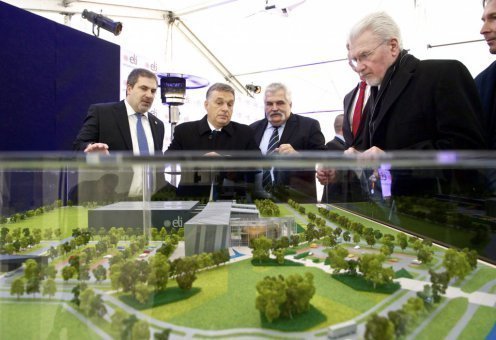Prime Minister Orban: Hungary on its way to becoming R+D hub

A whole network of scientific research centres must be established so as to make Hungary a research and development hub as well as a manufacturing centre, Prime Minister Viktor Orbán said, addressing the ELI laser centre’s foundation stone laying ceremony in Szeged, South Hungary.
Hungary, the Czech Republic and Romania won a joint bid in October 2009 to run the EU Extreme Light Infrastructure (ELI) project, which Hungary will host at the University of Szeged.
The Prime Minister pointed out the recent completion of the Hungarian Academy of Sciences’ (MTA) research centre for natural sciences and of the data centre of the European Organisation for Nuclear Research, known as CERN.
He expressed his hope that several new research centres would be built that would turn Hungary into a hub for Research and Development.
Funding for science has increased considerably since 2010 thanks to a plan drafted by the MTA within the framework of a long-term strategy, he added.
Gábor Szabó, Rector of the University of Szeged, stressed at the event that the establishment of the research centre may ensure Europe’s continues supremacy within the field of laser physics.
The centre will directly employ a staff of 400 but could indirectly contribute to the creation of 4-5000 jobs. In the first phase will involve the construction of the centre and the partial installation of the laser technology with a budget of HUF 37 billion, 85 percent of which will be EU funding. A further HUF 24.3 billion will be earmarked for purchasing and fitting research equipment during the 2014-2020 EU financial period. The second phase of the project is scheduled to finish by 2018.
The aim of the project is to establish a unique European research institute based on laser technology, in which both laser impulses and the other light sources generated with their help are available to international researchers. The facility is expected to enable outstanding scientific results not only with relation to research on ultra-rapid basic physics processes, but also within the fields of biology, medicine and materials sciences.
Photo: Károly Árvai
Source: http://kormany.hu/

